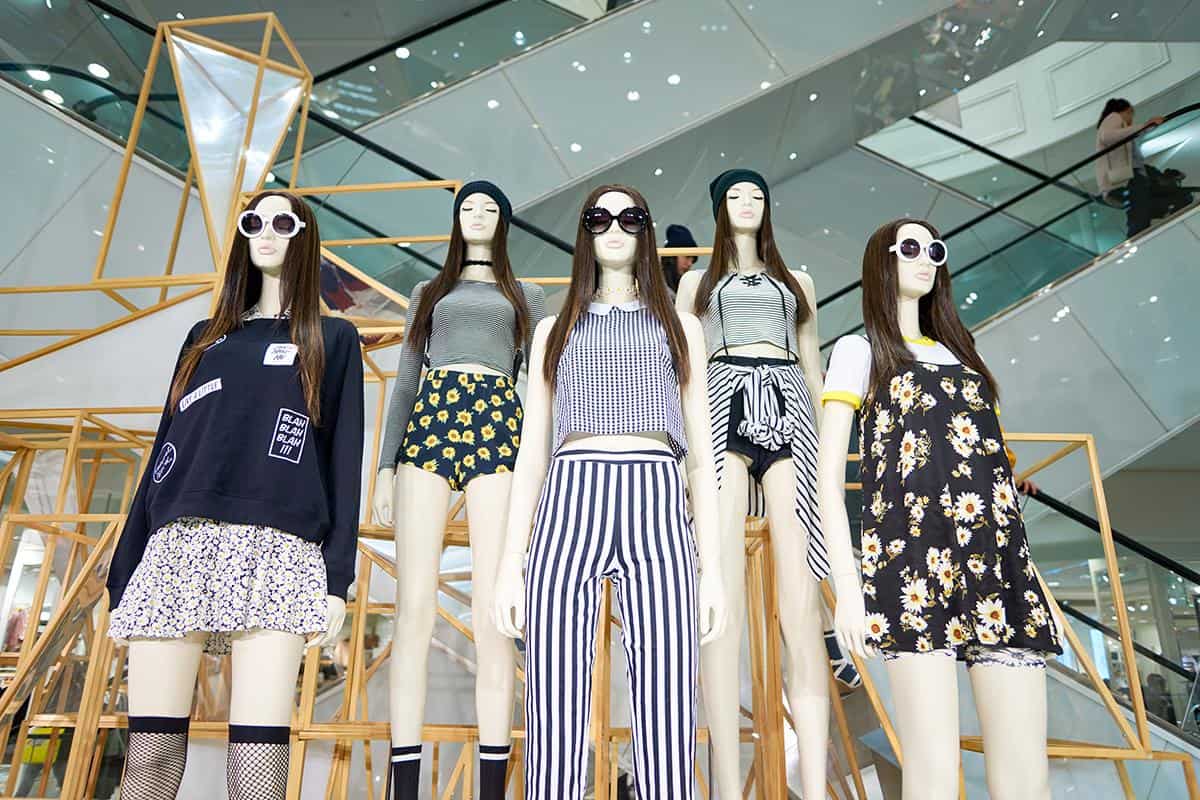One of the biggest stories in retail last year was ‘the death of the high street’. The decline of physical shopping was well documented; one by one, headlines told us that our favourite high street names were falling victim to huge losses, enduring shrinkages or facing disappearance altogether. Just when we thought it couldn’t get any worse, retail was hit by another bombshell – ASOS’s shock profit warning in December.
The firm warned that UK sales growth would fall short of expectations, and by April these fears were confirmed. ASOS profits plunged 87% after a difficult year caused by ‘heavy discounting and website traffic’ issues. ASOS said big price cuts across the market had forced it to bolster its promotions to win customers, particularly during the crucial festive shopping period.
Whilst this is certainly one credible explanation for the retailers’ sudden fall from grace, some experts believe the end is nigh for ‘fast-fashion’ retail behemoths in general. When people are quickly abandoning fast-fashion in favour of more expensive items, large businesses such as ASOS lack the flexibility and agility to adapt to changing demands. But for independent retailers, this brings with it a unique opportunity.
Eco-conscious consumers
Today’s retailers are operating in a world that is now far more concerned about the environment than ever before – and a big backlash could be brewing. It’s no secret that the fashion industry contributes negatively to climate change. In fact, its predicted that the industry could account for a quarter of the world’s carbon by 2050. Many consumers are highly concerned about the future of the planet and are actively making changes to positively contribute. While sales are down for several larger retailers, it doesn’t mean to say that consumers haven’t simply stopped spending their money. Rather, their habits and expectations are continuing to shift.
According to Mintel, two in five UK women aged 16-24 would like to see more eco-friendly fabrics used in clothes, and more than half of consumers in the UK think fashion retailers should be environmentally friendly – a figure that rises to 76% among young women aged 16-24. Similarly, sustainability and durability in themselves have now become fashionable. To today’s consumers, being stylish is less about being seen to wear the latest trends, but instead about being seen to invest in more expensive, high-quality clothing and maintain upkeep of these items.
Independent retailers, by nature of their size, are more nimble and able to adapt to new consumer preferences such as these. The challenge to survive in difficult conditions and adapt to changing trends is by no means insurmountable.
Independents already differentiate themselves from larger retail brands by being the kind of store that offers customers a niche product-set coupled with a more personalised experience; our own research discovered that 39% of consumers already feel they receive a more personalised experience with an independent retailer.
So, switched on retailers are doing more to ensure their entire offering is more sustainable and tailored to the wants and needs of consumers today. Although many larger retailers have made token gestures towards sustainable initiatives such as creating eco-friendly ranges – continuous production and consumption of new garments remains at the core of these brands.
Building customer loyalty
In addition to heavy discounting and perhaps an element of inflexibility, ASOS admitted that it could have done things better in terms of engaging and growing the customer base. A slick digital experience is fast becoming a requirement rather than a nice to have for all retailers. ASOS has since increased investment in its platforms, its tech infrastructure and its marketing to help turn things around.
This could be indicative of a wider trend; there’s a growing demand for an Amazon-like online experience across all brands, and an expectation of the kind of personalisation and customer service that comes with it. This extends even to bricks and mortar boutiques that need to harness the benefits of multi-channel retail by offering such options as synchronised online-to-offline shopping baskets and tailored post-purchase support. This is something independents can achieve, but only if they invest in the right kind of technology.
For example, our client Luke 1977, used PureTargeting technology to personalise its website experience and email campaigns with product recommendations based on browsing behaviour and purchase history. In a world where 92% of consumers are unlikely to engage with marketing that addresses them by name, this technology allows a brand to send triggered emails based a customer’s behaviour; for example, cart abandonment emails and re-engagement emails for lapsed customers.
Within the PureTargeting dashboard Luke 1977 had real-time visibility of the products within a visitor’s basket along with the actual monetary value of these potential purchases. This visibility allowed for constant optimisation based on real-time revenue and engagement data, leading to a more positive customer experience.
Accessibility and relevance
Independents must also ensure they are nurturing the right kind of customer loyalty, avoiding the habitual, passive loyalty so characteristic of faltering traditional retailers and instead fostering active loyalty by winning consumers’ trust along with their wallets. Loyalty is ultimately built on trust, and bettered through a combination of utility, accessibility and relevance.
However, retailers need to be careful to communicate their usefulness and relevance in the right way. Getting to know the customer’s preferences inside out, and intelligently using customer data to ensure the right content is reaching the right person, at exactly the right time is critical for achieving stand-out amongst the competition and delivering an exceptional user experience.
The only way is up
By doing this, smaller brands particularly, can build a customer journey that is richer than ever and create a deep emotional connection with consumers. These smaller brands all too often fall victim to the notion that only large tech giants can access sophisticated technology to achieve this, but that’s simply not the case. Understanding and continually aligning to the customer’s core values goes a long way. Similarly, by intelligently leveraging customer data and delivering thoughtful brand experiences even the smallest retailers can achieve a loyal brand following.






